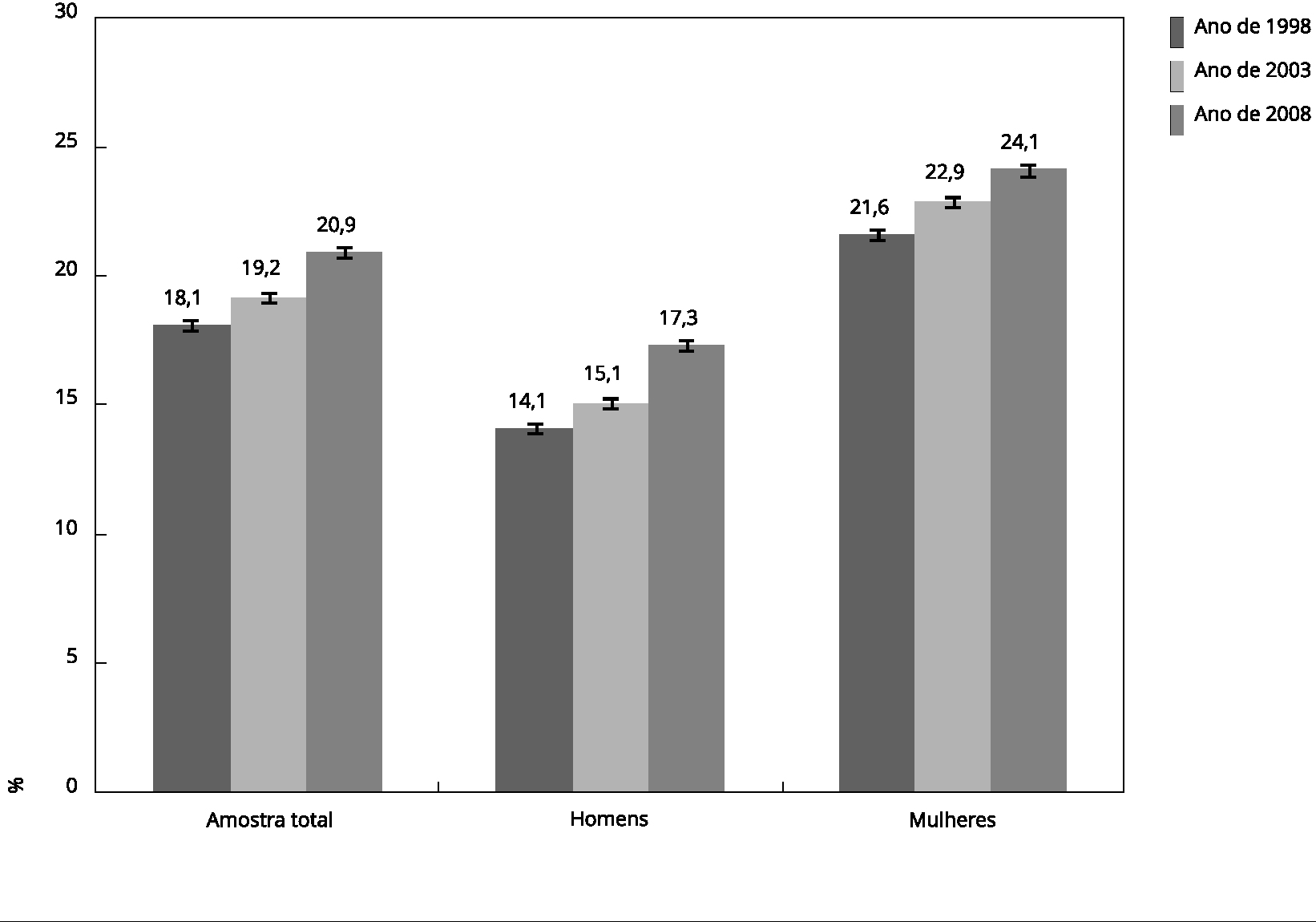The objectives were to analyze the prevalence of arterial hypertension reported by Brazilian adults over 20 years of age and verify associated socioeconomic variables in three time periods. The data are from the Brazilian National Household Sample Survey (PNAD) conducted by the Brazilian Institute of Geography and Statistics (IBGE) in 1998 (196,439 participants), 2003 (231,921), and 2008 (250,664). The outcome was self-reported arterial hypertension. The principal exposures were income in Reais and schooling in years. Data analysis used Poisson regression with robust variance with control for complex samples. Higher prevalence of arterial hypertension was associated with lower schooling, regardless of the survey year and gender. Low income was associated with higher prevalence of arterial hypertension, regardless of years of schooling, in the overall sample and in women. In men, this effect was not observed in 1998 and 2003. In 2008, high-income men showed higher prevalence of arterial hypertension, suggesting effect modification. Thus, the current study pointed to an increase in prevalence rates for arterial hypertension in the three periods, highlighting the inverse association with socioeconomic factors.
Hypertension; Health Inequalities; Health Surveys

 Time trend in the prevalence of systemic arterial hypertension in Brazil
Time trend in the prevalence of systemic arterial hypertension in Brazil Thumbnail
Thumbnail
